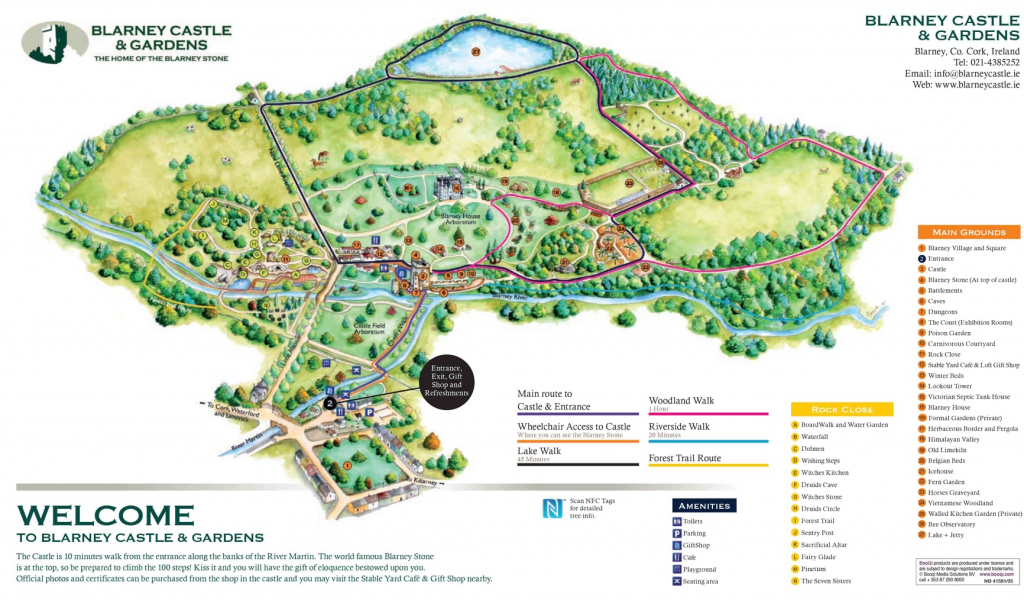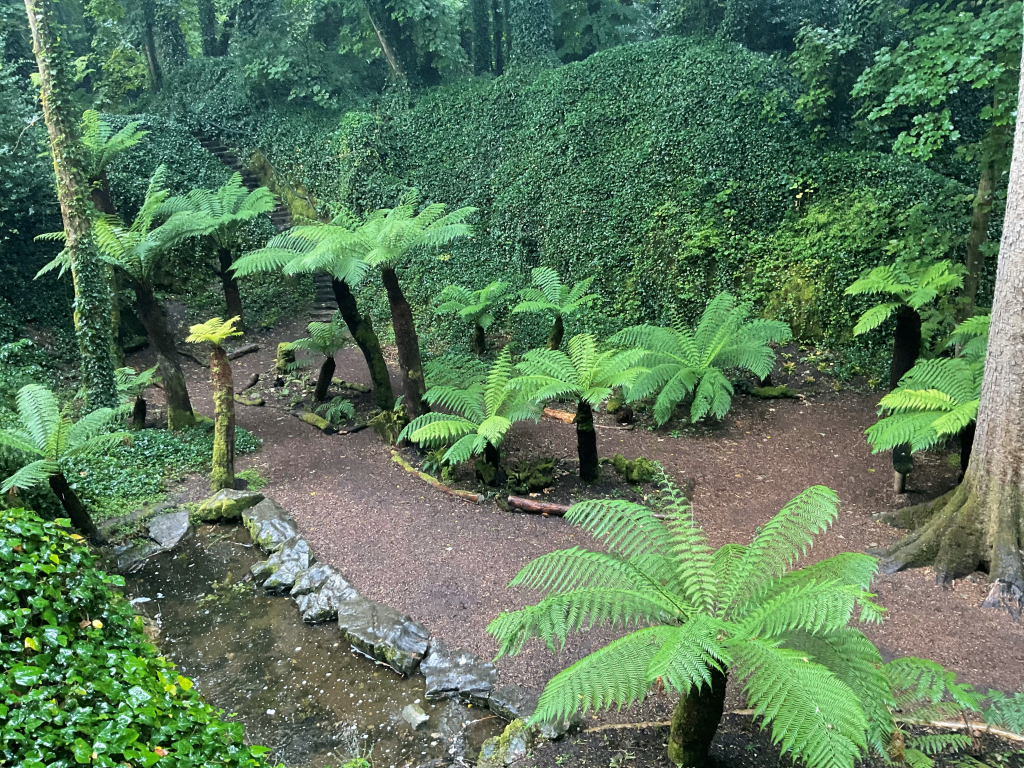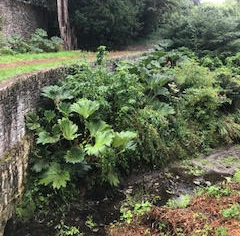
Located about 5 miles northwest from Cork city in the South of Ireland,15th century Blarney Castle is a tower house or fortress residence, and is home to the Blarney Stone believed to give eloquence to those who kiss it. It is surrounded by 60 acres of beautiful and interesting landscaping including an orchard, a collection of specimen trees, theme gardens, water garden, colorful borders, and a mystic place of natural rock formations with names recalling druids, witches and fairies.



Marked paths take the visitors around to the diverse parts of the garden and signs help to identify and enjoy the legends and folklore that make the garden so special. The Rock Close (mid left on map, surrounded by yellow paths), is situated under a canopy of ancient yews on an ancient Druid settlement with a sacrificial alter, druid circle, hermit’s cell, and witch’s kitchen with wishing steps. The witch’s staircase promises to grant a person their wish if they can walk down them backward with their eyes closed. If you work at it, you might be able to see the profile of the witch in one of the stones nearby. Just saying…..

While some of the trees that are associated with the Rock Close are about 300 years old, one of the most amazing trees in the garden is western red cedar. It was planted in the 1900s and has developed a unique branching pattern with branches that are bigger than many mature trees. Other rare trees (although much younger additions to the garden) include the foxglove tree and the tree of heaven.

Located in the center of the castle gardens in a former stone quarry, the fern garden features over 100 varieties of ferns growing in the filtered light created by tall trees and the fronds of tree ferns. The ferns vary in size from a few inches to many many feet tall. The tallest are the tree ferns (Dicksonia antarctica) native to eastern Australia. They grow up to 49′ tall (but are usually about 16′ tall) and have “trunks” that are actually vertical modified rhizomes and contain no woody tissue. The fronds are very large and greatly divided.

Enjoy the sound of water and the beautiful lush vegetation of the water garden. The huge leaves of giant rhubarb (Gunnera manicata) make a strong statement and add to the profusion of water-loving plants growing along the waterway. Native to Brazil, giant rhubarb grows up to 8′ tall and has leaves that are up to 11′ wide.

An interesting legend is dramatized by the garden located northeast of the Castle and dedicated to the Seven Sisters. According to the story, a medieval chieftain had 2 young sons and seven daughters. He took his sons into battle to fight a neighbor who was rustling his cattle and in the ensuing battle both of his sons were killed. As the chieftain rode home with the bodies of his dead sons he came upon a circle of nine standing rocks and marked the death of his sons by tipping over two of the rocks in the circle, leaving seven upright rocks representing his daughters.

One of the most interesting gardens is the one devoted to poisonous plants. Nestled up against the battlements of the castle, the garden was established to educate visitors about the positive and negative aspects of both wild and cultivated poisonous plants from all over the world. It includes plants such as wormwood, Irish foxglove, opium, mandrake, wolfbane, and cannabis. Although these plants are not likely to cause death under normal circumstances, the products that can be made with them can cause terrible consequences when used irresponsibly. Many of the plants are important sources for medicines and have a positive impact on our lives when used in this way. The key is responsible use of the plants.

A theme garden that is bound to intrigue children is the one devoted to carnivorous plants. In the Carnivorous Courtyard you will find plants such as Venus fly traps and North American pitcher plants, that derive some or most of their nutrition by trapping and consuming animals including insects, other arthropods, and occasionally larger animals. Carnivorous plants use a variety of methods to attract animals. The pitcher plant has a rolled leaf that contains a pool of digestive enzymes. Other carnivorous plants have a sticky mucilage to trap unsuspecting animals while still others have leaves that move to enclose an animal or a bladder that sucks animals in. Sometimes inward-pointing hairs force animals to move to the area where they will be digested. These unusual features are usually the result of adaption by the plants to soil that lacks nutrients.

The paths leading visitors through the gardens are lined by beautiful borders featuring grasses and many different kinds of colorful flowers. More herbaceous borders full of flowers may be seen in many parts of the garden and an especially noteworthy one consists of a double border 328′ long associated with a pergola 262′ long and covered with roses. In the summer when the roses are blooming the scent of the roses enhances the effect of the colorful borders creating a feast for the senses.
Two other areas of interest are:
The Himalayan Valley with its spring flowering shrubs including its huge 150 year old rhododendron, ‘Cornish Red’, that blooms for 3-4 months.
Vietnamese Woodland, a conservation project aimed at saving endangered species from North Vietnam